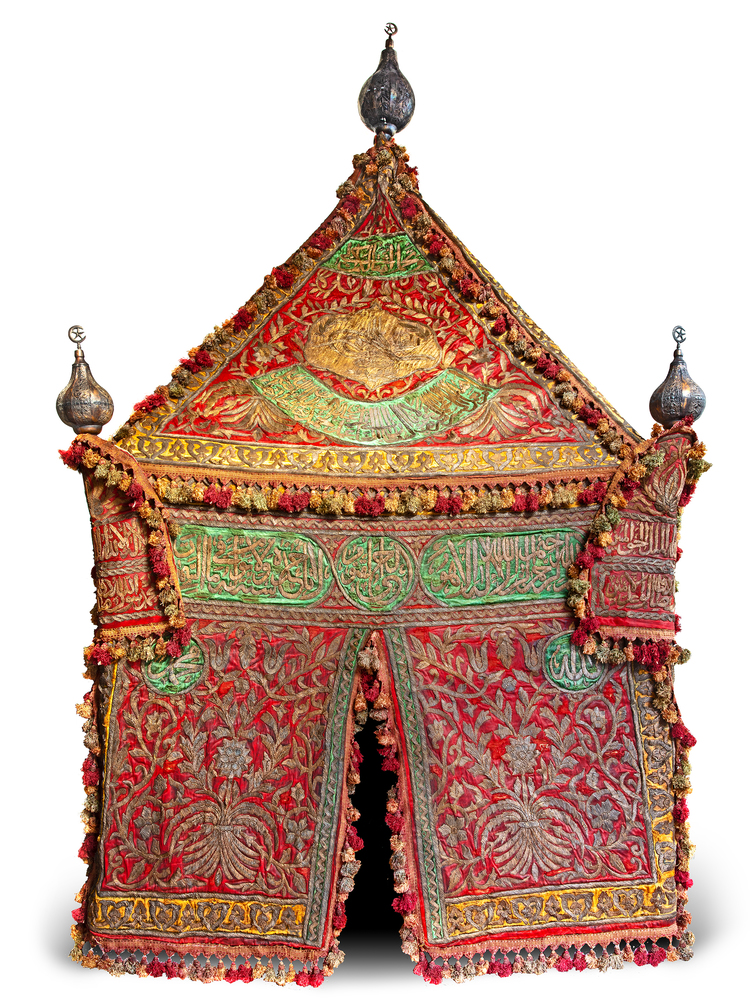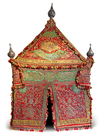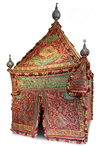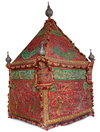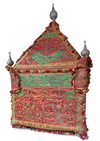AN OTTOMAN METAL-THREAD EMBROIDERED MAHMAL COVER MADE BY ORDER OF SULTAN ABDULHAMID II, EGYPT, LATE 19TH CENTURY
The lower cubic section surmounted by canopy in the form of a pyramid, one side with opening, of red and green silk profusely embroidered with silver and gilt-silver thread to each side of the lower section with two inscription-filled roundels surrounded by vines and floral sprays, above inscription-filled panels, the border with a band of interlocking palmette motifs; the upper section to one side with cartouches containing tughra and inscriptions to the remaining sides, above further inscription filled cartouches, surrounded by vines and floral interlace, the borders with interlocking palmette motifs, with four loose panels embroidered with two bands of inscription.
In the bands in gold on green, the Quran 2, surah Al-Baqarah, verse 255; In the other sides : the Quran, surah 16 An-Nahl, verse 7 and hapter 23 (Al Ahzab)verse 45.47 In the roundels, the names God, the Prophet (in gold on green), the four Orthodox Caliphs and Hasan and Husayn (in gold on green); 260 by 135 by 160 cm.
CATALOGUE NOTE Originally commissioned by Sultan Abdulhamid II of the Ottoman Empire who reigned from 1876 AD to 1909 AD as the 99th caliph of Islam and 34th Sultan of the Empire, the Mahmal’s tent-like shape is adorned with fine handcrafted and embroidered decoration made with heavy and elegant silver and gold thread calligraphy backed with red, green, and yellow silk. The Kiswah is changed every year on the 9th of zhul Hijjah, which is also the Day of Arafat - when Haj pilgrims leave for spending a day in the plains of Mount Arafat. The old Kiswah is removed and cut into small pieces and distributed among foreign dignitaries and important locals. The Kiswah used to be manufactured in Egypt and was transported in a Mahmal with a large delegation of pilgrims
